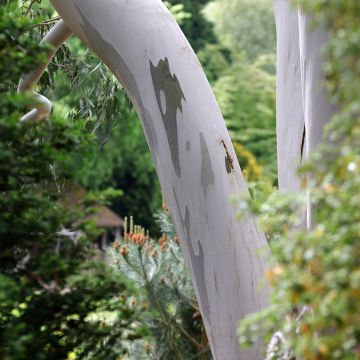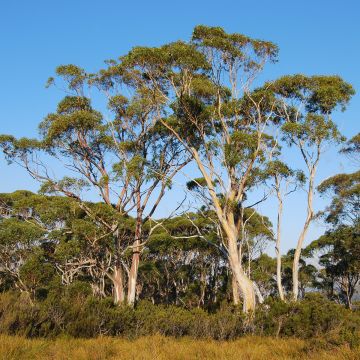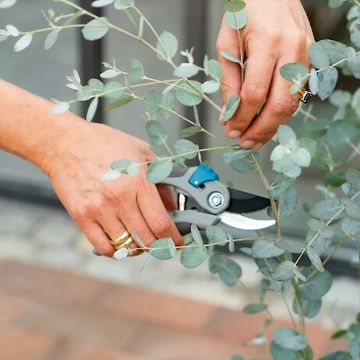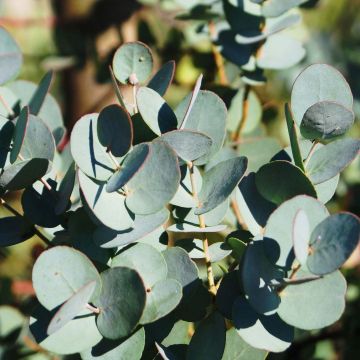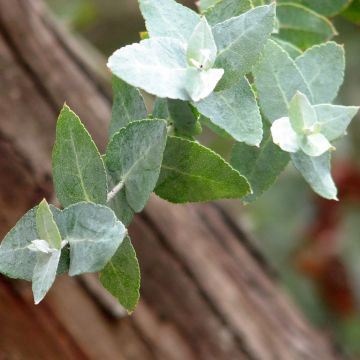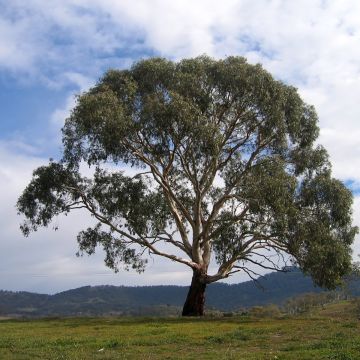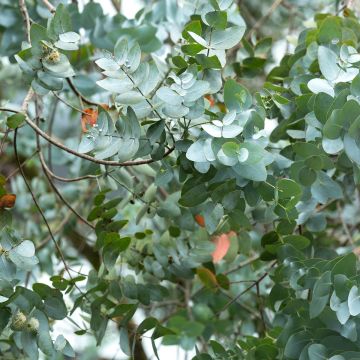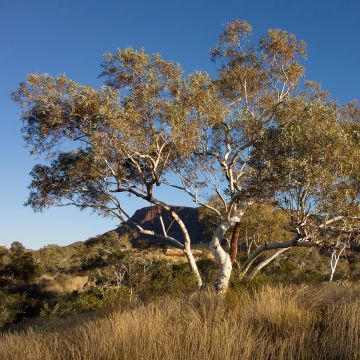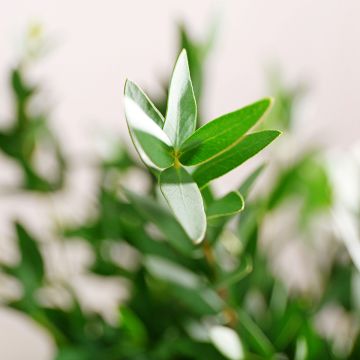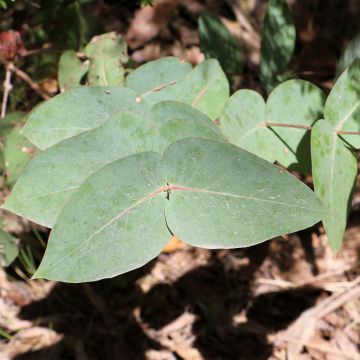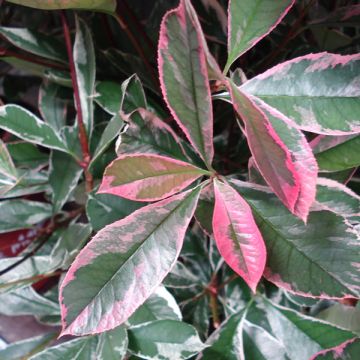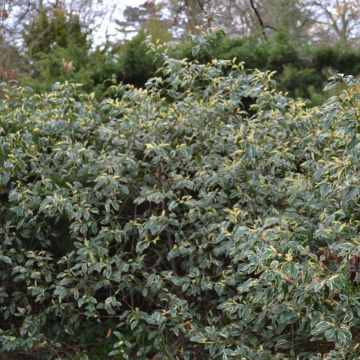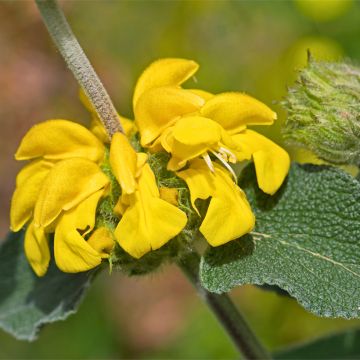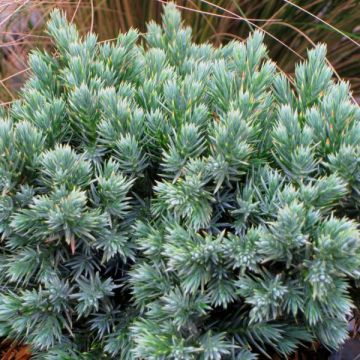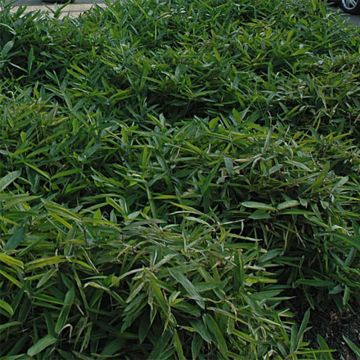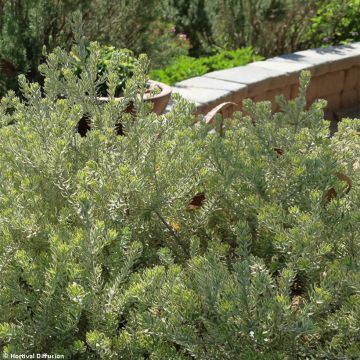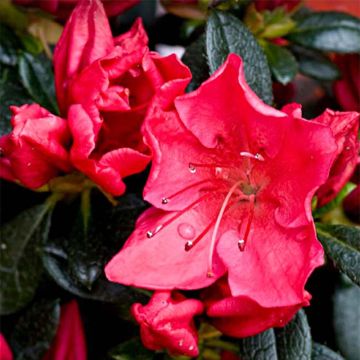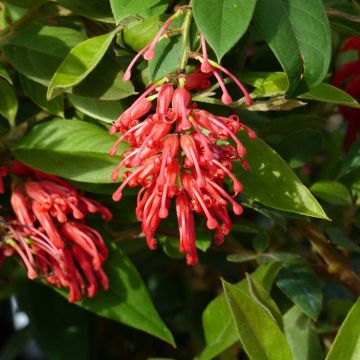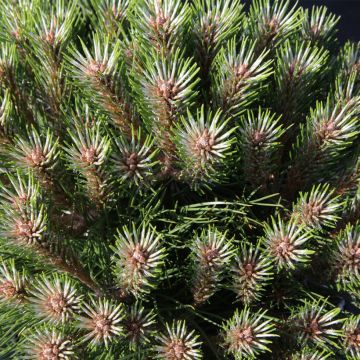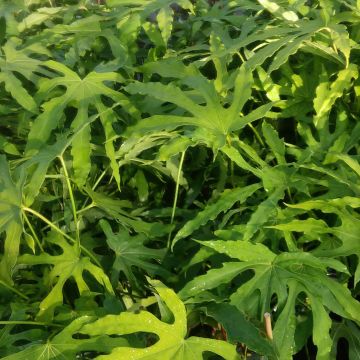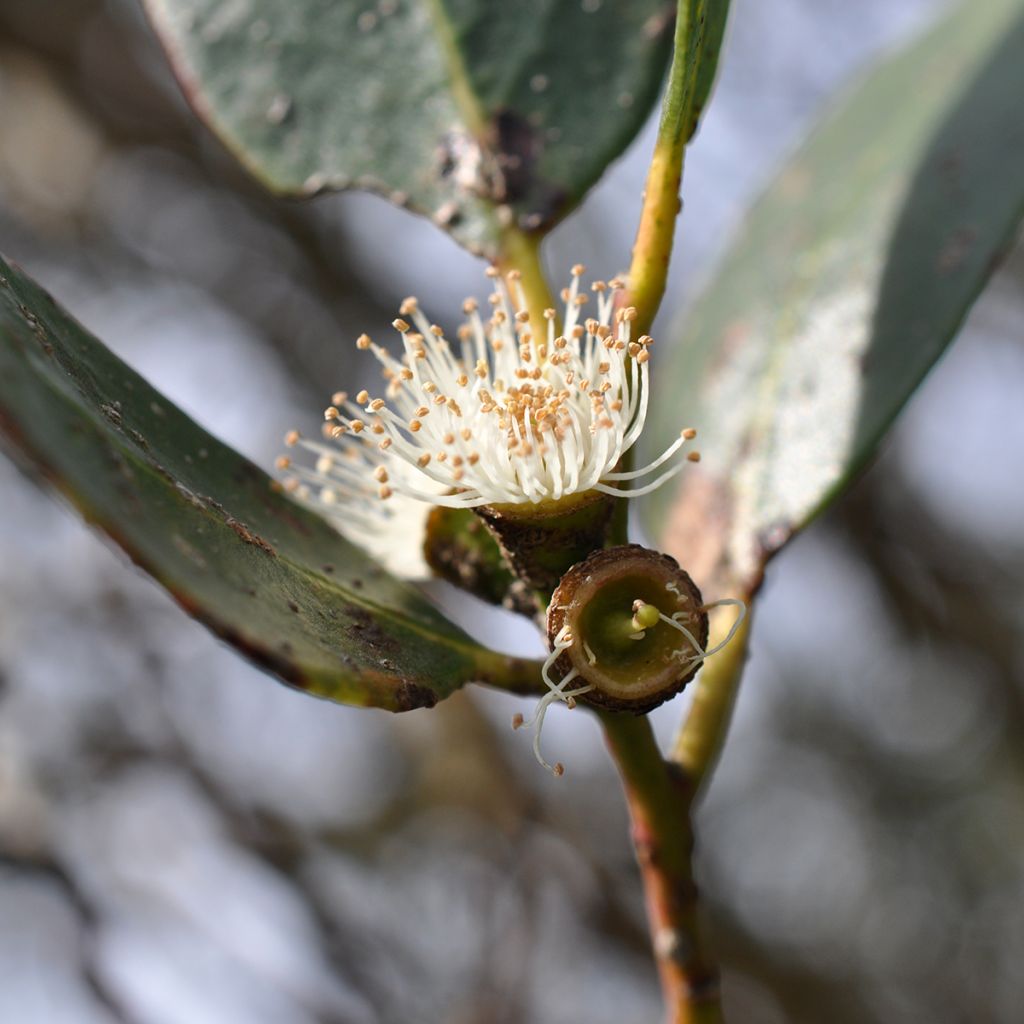

Eucalyptus kybeanensis
Eucalyptus kybeanensis
Eucalyptus kybeanensis
Kybean mallee ash
This item cannot be shipped to the selected country
Delivery charge from €5.90
More information
Delivery charge from €5.90
More information
Schedule delivery date,
and select date in basket
This plant carries a 24 months recovery warranty
More information
We guarantee the quality of our plants for a full growing cycle, and will replace at our expense any plant that fails to recover under normal climatic and planting conditions.
From €5.90 for pickup delivery and €6.90 for home delivery
Express home delivery from €8.90.
Does this plant fit my garden?
Set up your Plantfit profile →
Description
Eucalyptus kybeanensis is a species well suited to small gardens, hardly exceeding 4 to 5 metres (13 feet 1 inches to 16 feet 5 inches) after several years. This beautiful tree has rapid growth when young, becoming slower over the years, and develops on several stems from the base, thus forming an elegant and graceful tuft. Its vegetation is not dense, so you can see the attractive trunks covered with chocolate brown bark with white streaks, changing with age. The olive-green, evergreen, lanceolate leaves, give charm to this eucalyptus all year round. Its Australian subalpine origins give it vigour, robustness and good hardiness, provided it is planted in soil that is not too wet in winter and not too dry in summer. This eucalyptus can be grown in pots, being careful to maintain a balance between root volume and vegetation, while maintaining regular watering. Young shoots respond well to pruning, which allows control of its development.
Eucalyptus kybeanensis is a species endemic to the high subalpine regions of south-eastern Australia, south-east of New South Wales (Wadbilliga, Munyang Range, Guthega, Geehi Creek) and east of Victoria (Mt Seldom Seen, Mt Wellington, Mt Skene). In these high subalpine regions, it develops on soils variably composed of turf, sand and clay, and it is exposed to harsh climatic conditions (frost, snow, thick fogs). Belonging to the Myrtaceae family, it is commonly called Kybean Mallee Ash. Richard Hind Cambage (geologist and botanist) collected this variety for the first time in 1908 near Kybean, a town located 123 km (76.4 mi) south of Canberra, in New South Wales. The species kybeanensis refers to this town.
This eucalyptus is named "mallee" in Australia, because of its stature formed by several stems starting from the ground, reaching a height less than 10 metres (32 feet 10 inches). In its natural habitat, it reaches a height of 7 to 10 m (23 to 32 ft 10 in) and 5 to 6 m (16 ft 5 in to 19 ft 8 in) in width. In our climates, it is more moderate, not exceeding 4 to 6 m (13 ft 1 in to 19 ft 8 in) in height. With a rather slow growth, this species takes about 7 to 9 years to reach 4 to 5 m (13 ft 1 in to 16 ft 5 in) in height. It generally rises on several trunks starting from a lignotuber* located just below the surface of the soil. When young it displays grey branches covered with white hairs and bearing juvenile foliage, composed of lanceolate, pointed leaves, 4 to 8 cm (1.6 to 3.1 in) long and 1 to 2 cm (0.4 to 0.8 in) wide, upright, green and shiny. Then, as it develops, the leaves, with a petiole of about 5 mm (0.2 in), take a lanceolate to crescent shape, rounded at the tip, 6 to 11 cm (2.4 to 4.3 in) long and 1 to 1.5 cm (0.4 to 0.6 in) wide, shiny on both sides and pretty water green. The leaves are tough and slightly aromatic and give off a menthol scent, when crushed, rich in eucalyptol. As it ages, its brown bark with white streaks, peels off in ribbons, revealing a smooth underlayer, with patches of brown and caramel colour, mixed with olive green and grey shades. Flowering occurs in spring, between March and May on plants a few years old. The inflorescence is in the leaf axil, and composed of seven, nine or eleven small white flowers gathered in a tight bunch, delicately scented and very attractive to bees. After flowering, the fruits, called "gumnuts", appear in the form of a woody, globular, truncate capsule, attached to the branch by a short petiole. They are a beautiful silver-grey and remain attached to the stem for a long time.
This eucalyptus has a lignotuber, consisting of a swelling rich in starch that forms on the roots just below the surface of the soil. This organ allows it to restart from the stump in case of severe frost, fire or severe pruning. The plant also produces numerous shoots from dormant buds located under its bark, allowing it to respond well to coppicing, topping or more severe pruning. Note that this Eucalyptus is native to the alpine highlands withstands snow and wind.
The Kybean Gum Tree finds a place in the garden planted alone in a clear space to appreciate the beauty of its barks and the elegance of its foliage. In order to highlight its architectural habit, it is grown on several trunks. It supports both semi-mountainous and semi-arid climates in summer, and its resistance to cold will go down to -15°C (5 °F). Comfortable in wet, but not marshy, soil, it has the ability to dry them out.
Eucalyptus kybeanensis in pictures
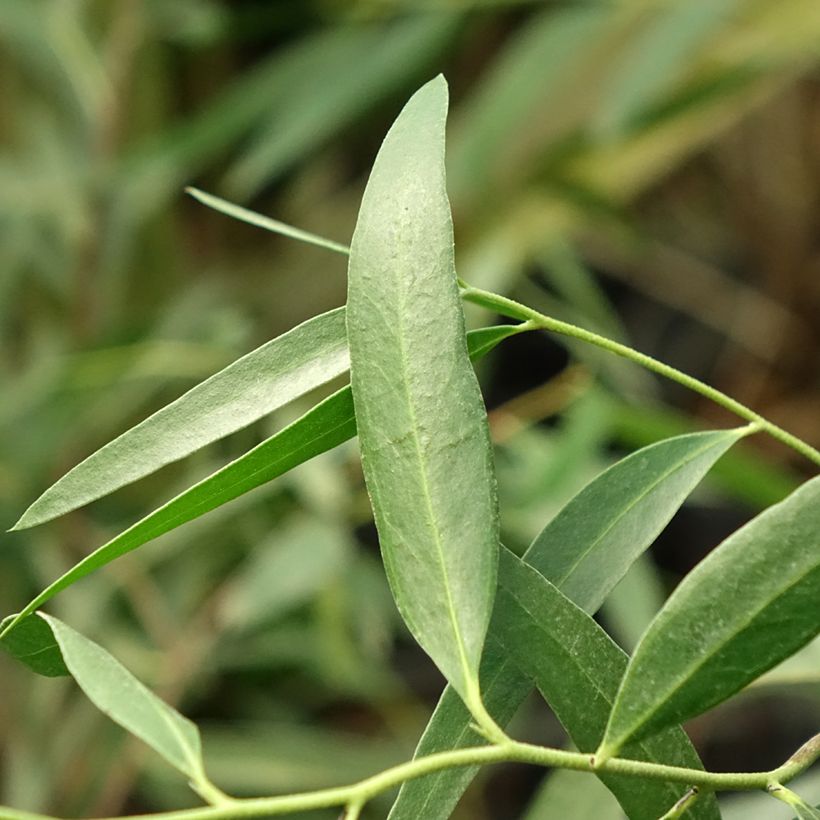

Plant habit
Flowering
Foliage
Botanical data
Eucalyptus
kybeanensis
Myrtaceae
Kybean mallee ash
Australia
Other Eucalyptus
Planting and care
Eucalyptus kybeanensis is best planted at the start of spring in cold regions, and at the start of autumn in dry and hot climates. Plant in well-prepared soil, not too dry to moist, in a very sunny situation. Clayey or silty soils, even limestone, are well tolerated. A well-established specimen is hardy down to -15 °C (5 °F) in these conditions and is tolerant of snow. Young plants are more sensitive to heavy frosts, especially if the frost settles for several days and the soil is damp. In most regions, you can plant it in the open ground, ensuring good drainage by adding coarse sand, pozzolana, or non-limestone gravel. Then let nature take its course, the growth is normal.
For the first two years, regular watering is necessary, then the bush will not need any watering in summer. Fertiliser is not recommended. Pruning is not necessary, to let the unique habit of this superb eucalyptus express itself. However, it is well tolerated after flowering. It is possible to train the eucalyptus on a single trunk, by selecting the one that is best placed and cutting all the others flush. And it is quite possible to coppice this small tree to form a large bush whose height you can limit.
Young plants most easily take root in the open ground. The deep root system of the Eucalyptus does not like to be disturbed so choose its location carefully.
The mountain species are useful for their hardiness, but they dislike heatwaves and soils that are too dry.
Planting period
Intended location
Care
This item has not been reviewed yet - be the first to leave a review about it.
Evergreen shrubs
Haven't found what you were looking for?
Hardiness is the lowest winter temperature a plant can endure without suffering serious damage or even dying. However, hardiness is affected by location (a sheltered area, such as a patio), protection (winter cover) and soil type (hardiness is improved by well-drained soil).

Photo Sharing Terms & Conditions
In order to encourage gardeners to interact and share their experiences, Promesse de fleurs offers various media enabling content to be uploaded onto its Site - in particular via the ‘Photo sharing’ module.
The User agrees to refrain from:
- Posting any content that is illegal, prejudicial, insulting, racist, inciteful to hatred, revisionist, contrary to public decency, that infringes on privacy or on the privacy rights of third parties, in particular the publicity rights of persons and goods, intellectual property rights, or the right to privacy.
- Submitting content on behalf of a third party;
- Impersonate the identity of a third party and/or publish any personal information about a third party;
In general, the User undertakes to refrain from any unethical behaviour.
All Content (in particular text, comments, files, images, photos, videos, creative works, etc.), which may be subject to property or intellectual property rights, image or other private rights, shall remain the property of the User, subject to the limited rights granted by the terms of the licence granted by Promesse de fleurs as stated below. Users are at liberty to publish or not to publish such Content on the Site, notably via the ‘Photo Sharing’ facility, and accept that this Content shall be made public and freely accessible, notably on the Internet.
Users further acknowledge, undertake to have ,and guarantee that they hold all necessary rights and permissions to publish such material on the Site, in particular with regard to the legislation in force pertaining to any privacy, property, intellectual property, image, or contractual rights, or rights of any other nature. By publishing such Content on the Site, Users acknowledge accepting full liability as publishers of the Content within the meaning of the law, and grant Promesse de fleurs, free of charge, an inclusive, worldwide licence for the said Content for the entire duration of its publication, including all reproduction, representation, up/downloading, displaying, performing, transmission, and storage rights.
Users also grant permission for their name to be linked to the Content and accept that this link may not always be made available.
By engaging in posting material, Users consent to their Content becoming automatically accessible on the Internet, in particular on other sites and/or blogs and/or web pages of the Promesse de fleurs site, including in particular social pages and the Promesse de fleurs catalogue.
Users may secure the removal of entrusted content free of charge by issuing a simple request via our contact form.

































